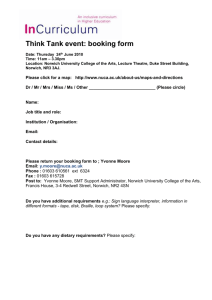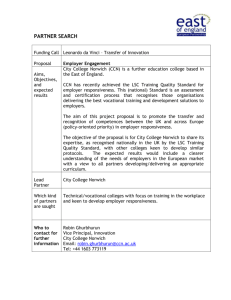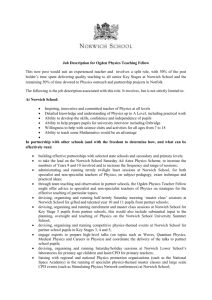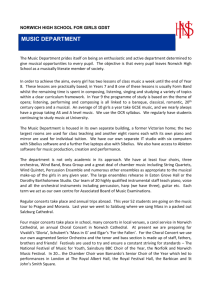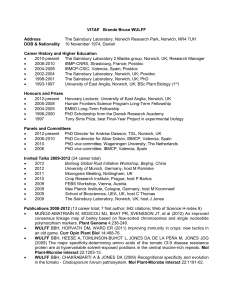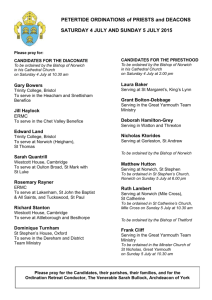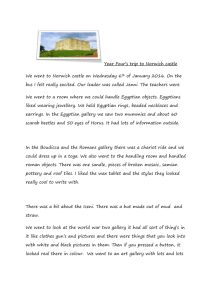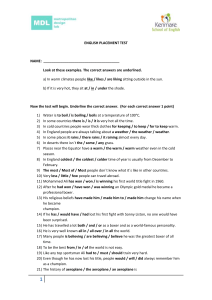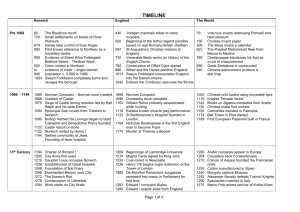William of - Fordham University
advertisement
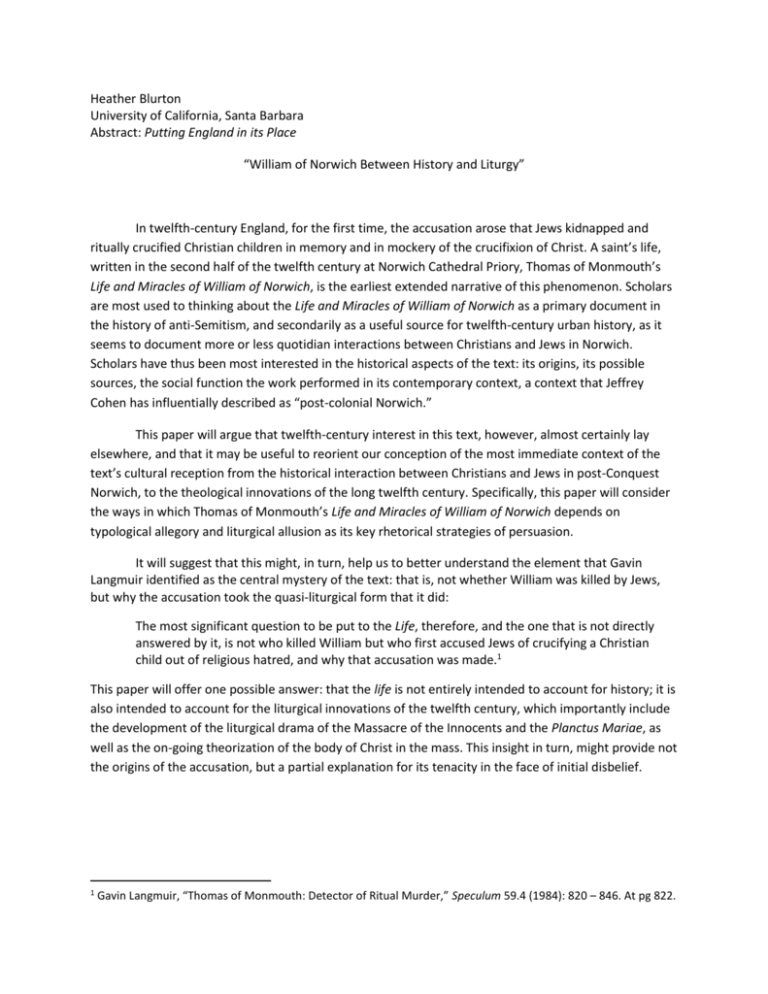
Heather Blurton University of California, Santa Barbara Abstract: Putting England in its Place “William of Norwich Between History and Liturgy” In twelfth-century England, for the first time, the accusation arose that Jews kidnapped and ritually crucified Christian children in memory and in mockery of the crucifixion of Christ. A saint’s life, written in the second half of the twelfth century at Norwich Cathedral Priory, Thomas of Monmouth’s Life and Miracles of William of Norwich, is the earliest extended narrative of this phenomenon. Scholars are most used to thinking about the Life and Miracles of William of Norwich as a primary document in the history of anti-Semitism, and secondarily as a useful source for twelfth-century urban history, as it seems to document more or less quotidian interactions between Christians and Jews in Norwich. Scholars have thus been most interested in the historical aspects of the text: its origins, its possible sources, the social function the work performed in its contemporary context, a context that Jeffrey Cohen has influentially described as “post-colonial Norwich.” This paper will argue that twelfth-century interest in this text, however, almost certainly lay elsewhere, and that it may be useful to reorient our conception of the most immediate context of the text’s cultural reception from the historical interaction between Christians and Jews in post-Conquest Norwich, to the theological innovations of the long twelfth century. Specifically, this paper will consider the ways in which Thomas of Monmouth’s Life and Miracles of William of Norwich depends on typological allegory and liturgical allusion as its key rhetorical strategies of persuasion. It will suggest that this might, in turn, help us to better understand the element that Gavin Langmuir identified as the central mystery of the text: that is, not whether William was killed by Jews, but why the accusation took the quasi-liturgical form that it did: The most significant question to be put to the Life, therefore, and the one that is not directly answered by it, is not who killed William but who first accused Jews of crucifying a Christian child out of religious hatred, and why that accusation was made.1 This paper will offer one possible answer: that the life is not entirely intended to account for history; it is also intended to account for the liturgical innovations of the twelfth century, which importantly include the development of the liturgical drama of the Massacre of the Innocents and the Planctus Mariae, as well as the on-going theorization of the body of Christ in the mass. This insight in turn, might provide not the origins of the accusation, but a partial explanation for its tenacity in the face of initial disbelief. 1 Gavin Langmuir, “Thomas of Monmouth: Detector of Ritual Murder,” Speculum 59.4 (1984): 820 – 846. At pg 822.

